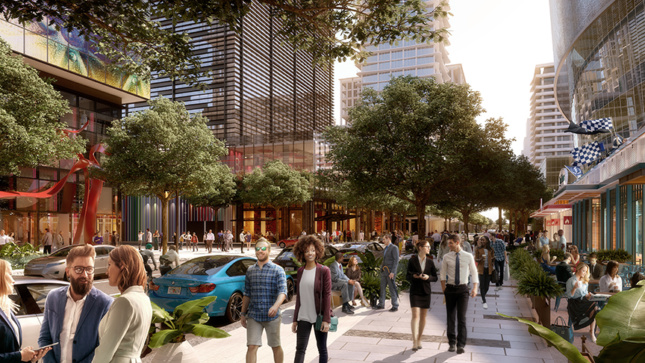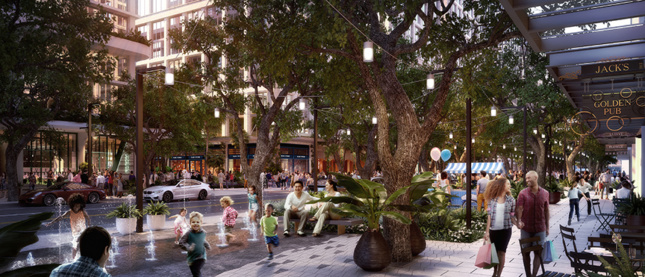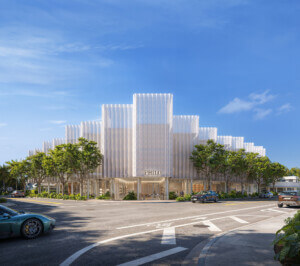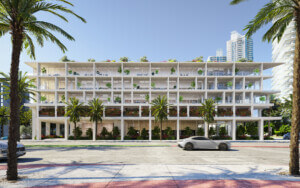New images for Tampa’s largest mixed-use project were recently revealed, illustrating the city’s intense investment into its waterfront and downtown core.
Water Street is a $3 billion, 50-acre mixed-use waterfront district covering 16 city blocks on Hillsborough Bay. The project is being developed by Strategic Property Partners (SPP), a joint venture from Jeffrey Vinik, owner of the Tampa Bay Lightning hockey team, and Cascade Investment, run by Microsoft founder Bill Gates. The design team includes Cambridge-based Reed Hilderbrand working in conjunction with Boston-based Elkus Manfredi Architects for the project’s landscape architecture and master plan, respectively. Engineering firm Stantec is responsible for infrastructure and roadway improvements.
Like other U.S. cities in the post-industrial era, Tampa largely ignored its former industrial waterfront for the majority of the late 20th century, instead focusing on building highways, surface parking lots, and structures that ultimately cut off the water from city residents. Tampa’s lack of a cohesive downtown identity has been an issue that has plagued the city and is one of the main issues that SPP is aiming to resolve with Water Street.

It’s an ambitious project. If successful, Water Street will become the world’s first WELL-certified community, which sets new standards for design as a means for well-being and health through elements like daylighting and air quality. A centralized district cooling facility will be built to serve all the buildings in Water Street, opening up rooftops to have more space for greenery and/or active amenity spaces. Water Street also intends to be LEED Neighborhood Development (ND) certified, which was created to shape more sustainable and well-connected neighborhoods.
Once completed, there will be two million square feet of office space, 3,500 new residencies, one million square feet of new retail, cultural, educational, and entertainment space, and two new hotels. Two projects are already underway: a JW Marriott hotel and a $164.7 million University of South Florida Morsani College of Medicine and Heart Institute.

Tampa is investing heavily into its waterfront edge in an effort to revitalize and reconnect its downtown. An estimated $13 billion will be spent on development in the Tampa Bay area, according to a Dodge Data & Analytics report, and the most ambitious project is Water Street. The massive investment is an indicator not only of the city’s push to attract companies and young people, but also of the city’s desire to unite its neighborhoods, including the existing Central Business District and surrounding neighborhoods of Harbour Island and the Channel District. For the past two years, construction teams have been working to create walkable and bikeable streets that eschew the traditional city street grid, redefining Tampa’s downtown into a walkable, pedestrian-friendly area.
“Our plan for Water Street Tampa builds on decades of insights into what makes city neighborhoods work, working within the context of a modern lifestyle in Tampa,” said James Nozar, CEO of SPP. By developing in an underdeveloped area that has no connection to the waterfront, “we’re filling the hole in the middle of the doughnut,” he said to The New York Times.
Once completed, the developers estimate that more than 23,000 people will live, work, dine, and visit Water Street. The first phase is meant to open in 2021, but the expected completion date is still a ways off in 2027.











